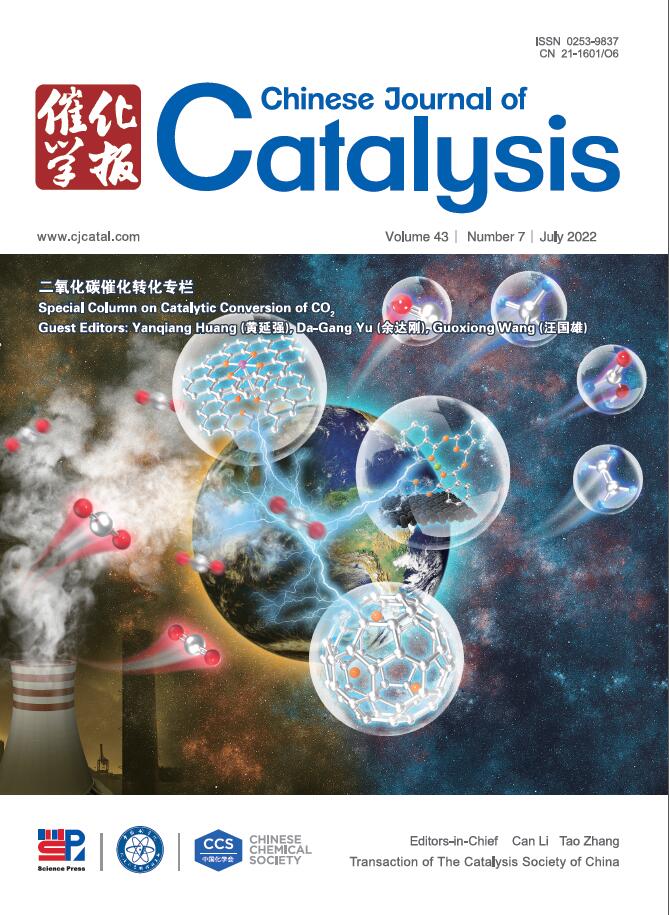光催化生产H2O2的金属基有机催化剂的电子结构调制
IF 17.7
1区 化学
Q1 CHEMISTRY, APPLIED
引用次数: 0
摘要
光催化合成过氧化氢(H2O2)因其简单和环境效益而成为一种很有前途的方法。然而,它们的发展仍然面临着重大的挑战,例如光产生的载流子的快速重组和非金属有机催化剂上缓慢的表面氧化还原反应。具有可调电子结构的金属基有机催化剂被认为是探索H2O2合成机理和结构-性能关系的理想催化剂。综述了氧还原和水氧化两种光催化合成H2O2的基本原理。对金属基有机催化剂的电子结构调整策略的最新进展进行了严格的审查,重点关注它们对光吸收范围、光生载流子分离、O2活化和H2O2选择性生成的影响。此外,本文还对牺牲剂在光催化反应体系中的应用进行了综合评价,并对金属基有机催化剂在H2O2光合作用中的应用前景进行了展望。本文章由计算机程序翻译,如有差异,请以英文原文为准。
Electronic structure modulation of metal based organic catalysts for photocatalytic H2O2 production
Photocatalytic synthesis of hydrogen peroxide (H2O2) has emerged as a promising approach because of its simplicity and environmental benefits. However, significant challenges remain obstacles to their advancement, such as the rapid recombination of photogenerated charge carriers and sluggish surface redox reactions on nonmetallic organic catalysts. Metal-based organic catalysts with tunable electronic structures are considered ideal for exploring the mechanisms and structure-performance relationships in H2O2 synthesis. This review summarizes the fundamental principles of photocatalytic H2O2 synthesis via oxygen reduction and water oxidation reactions. Recent advancements in electronic structure tuning strategies for metal-based organic catalysts are critically examined, focusing on their impact on light absorption range, photogenerated carrier separation, O2 activation, and the selective generation of H2O2. In addition, this review comprehensively evaluates the applications of sacrificial agents in photocatalytic reaction systems and offers insights into the future development of metal-based organic catalysts for H2O2 photosynthesis.
求助全文
通过发布文献求助,成功后即可免费获取论文全文。
去求助
来源期刊

Chinese Journal of Catalysis
工程技术-工程:化工
CiteScore
25.80
自引率
10.30%
发文量
235
审稿时长
1.2 months
期刊介绍:
The journal covers a broad scope, encompassing new trends in catalysis for applications in energy production, environmental protection, and the preparation of materials, petroleum chemicals, and fine chemicals. It explores the scientific foundation for preparing and activating catalysts of commercial interest, emphasizing representative models.The focus includes spectroscopic methods for structural characterization, especially in situ techniques, as well as new theoretical methods with practical impact in catalysis and catalytic reactions.The journal delves into the relationship between homogeneous and heterogeneous catalysis and includes theoretical studies on the structure and reactivity of catalysts.Additionally, contributions on photocatalysis, biocatalysis, surface science, and catalysis-related chemical kinetics are welcomed.
 求助内容:
求助内容: 应助结果提醒方式:
应助结果提醒方式:


